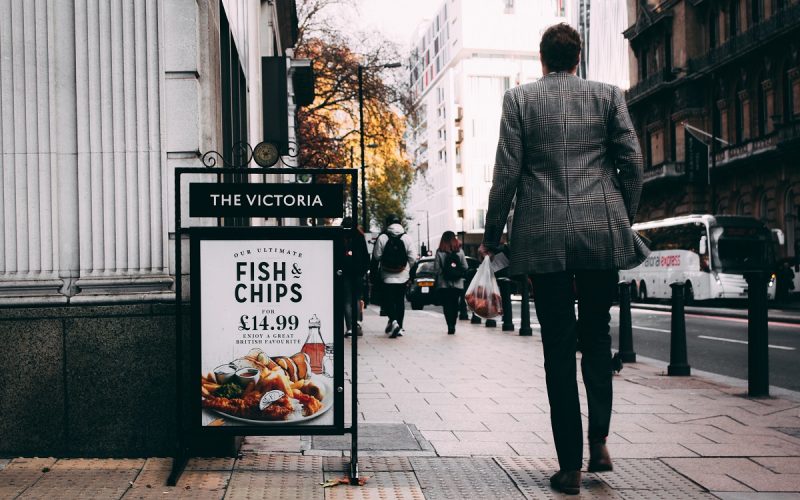
A good poster design can be the difference between an average poster and one that draws attention and engages the audience, but what exactly makes a good poster design? In this article, we’ll explore eight elements that make up a great poster design.
Posters are a key to getting your message across, so it’s important to design accordingly. When you’re finished reading this guide, you’ll have the tools necessary to create amazing posters of your own!
White Space
Having plenty of white space around your poster allows viewers to see what’s going on at a glance. You don’t want to lose them in an overcrowded design; everything should be clearly defined and easy to read.
White space also encourages people to hang around and give your poster more than just a passing glance—which is particularly important if you have a specific call-to-action for attendees or are trying to collect some data about their likes/dislikes, etc. Play around with different types of frames to see which will work best for you (larger or smaller, or single page or multi-page).
Balance
One of the most important elements of poster design is balance because they give them structure and help ensure that you’re not weighing one element too heavily over another.
Balance also ensures that your design doesn’t become overcrowded or look cluttered; without proper balance, your poster may start to resemble an eye chart more than an informative infographic.
A well-balanced poster features a nice vignette at its center that attracts attention while framing other pieces of information in an aesthetically pleasing way, allowing viewers to focus on different elements depending on their interest level.
Uniqueness
A poster is usually only seen for a few seconds before being ignored or taken away by some passer-by. This makes it important to make your poster stick out in those few seconds that it’s on display.
Your poster should have an easy-to-read font, a strong visual focus, and some originality to separate it from other posters. If you’re making a poster for something, be creative with your format—you can go square-shaped or even as big as a billboard!
Focus On One Idea
More is not always better, and sometimes less is more. A poster design should focus on one idea or argument. This doesn’t mean your poster needs to be overly simple or only include a few elements; it just means that everything on your poster should contribute to one clear idea and make for a cohesive final product.
If you have too many messages, too many images, or even simply too much stuff in general, it might make it harder for your viewers to extract what you are trying to say. The poster will keep all of these together, so there won’t be any questions about what you want your audience to learn.
Simplicity
A poster is already a crowded visual space, so it’s important to keep your design simple. If you can convey your message with less, do it. The fewer different fonts and colors you use, the better it is.
When in doubt about how many words or images to include on your poster, ask yourself if you could take something away without harming clarity. Remember that poster frames are going in spaces where people often won’t spend much time—and they don’t always have good light. Make sure that your design works well both up close and far away.
Typography and Hierarchy
Typography is a huge part of poster design. It’s not just about what font you use, but how that font relates to everything else on your poster. Typography also dictates hierarchy; by choosing an appropriate typeface, you are dictating what information is more important than others—and it should be more visible as well.
Without typography, you’ll have text in random sizes and fonts everywhere; making it hard for viewers to quickly decipher what each section says or understands where they should focus their attention.
Colour Scheme
The colours in your poster design are instrumental to its success. Different colours make people feel different ways, and evoke different feelings in them; that’s why an emotional reaction is integral to any good design.
However, it’s also important to note that different colour schemes work better for different products or organizations. For example, blue is known as a calming color. If you want people to feel relaxed when they look at your posters—perhaps if they need time to consider what you have put on display—then it’s best to incorporate blue somewhere in your design. If you want your poster’s message to be conveyed quickly and effectively (and perhaps with some shock value), then choosing red or orange might be a better option for you!
Significance
Make sure that your poster is relevant, interesting, and memorable. The audience should walk away from your poster with something meaningful. If you can make your audience think differently, or even better yet, act differently after viewing your poster, then you’ve accomplished your goal.
Think about an emotion or reaction to spark interest and motivation in others. Try to create a focus, create patterns, use contrast, emphasize important items and add perspective elements.
Conclusion
So the crux is, when planning your poster, always keep your audience in mind. If you are making a poster for yourself, you can include as much detail as you would like. But if you’re making one for anyone else to read, remember that they will likely be passing by at least 100 posters during their time at any given event.
You need to make sure your message is clear, concise, and persuasive or it won’t stick out from all of the other posters around it. Use poster frames to protect posters from wear and tear. Always keep these factors in mind before jumping into designing your poster. They are vital ingredients when baking up an amazing piece of work that has what it takes to wow everyone who views.





